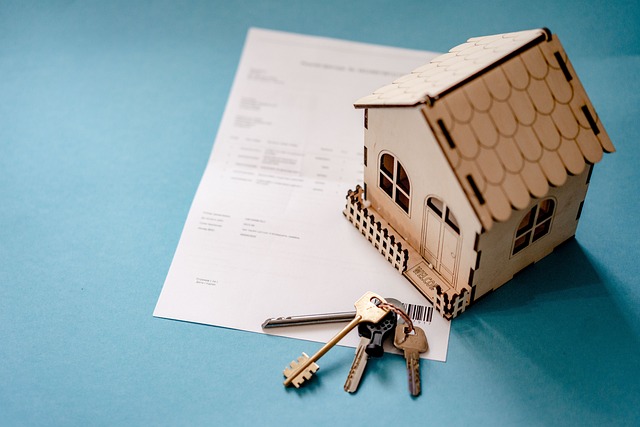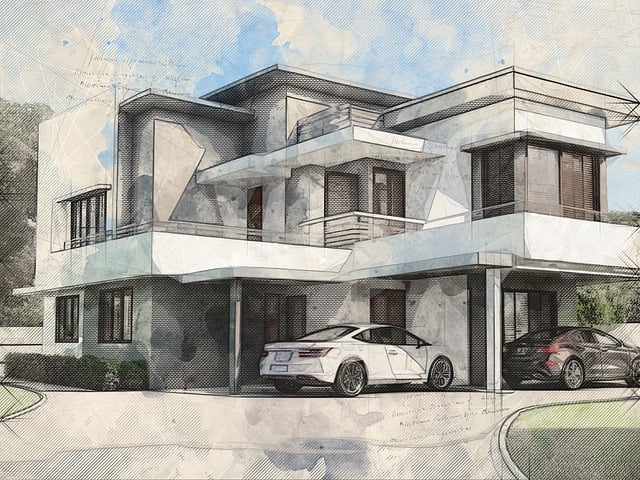When considering the purchase of a second property in Singapore, it's crucial to understand the local real estate market's complexities, shaped by stringent government regulations and high demand. The market is competitive, with various cooling measures and robust interest from investors. Buyers must navigate the Additional Buyer's Stamp Duty (ABSD) and Loan-to-Value (LTV) ratios, which differ for private residential units and HDB flats, and are enforced by the Council for Estate Games (CEA) and the Monetary Authority of Singapore (MAS). The Total Debt Servicing Ratio (TDSR) is another key factor to consider, ensuring financial health for borrowers. Properties range from high-end condominiums to resale HDB flats, each offering different investment potential and returns, influenced by economic trends, population changes, and strategic development plans. The market's dynamic nature means that informed decision-making is essential when purchasing a second home in Singapore, with careful financial planning required for the initial capital outlay, recurring expenses, and long-term investment objectives. Rental income prospects, property market trends, and potential capital appreciation should be evaluated to ensure the purchase aligns with your financial goals and contributes positively to your portfolio over time.
Exploring the nuances of the real estate market in Singapore, this comprehensive guide delves into the multifaceted aspects of purchasing a second property. From the diverse property types to the financial and legal considerations, this article provides a detailed examination for prospective buyers. It covers the impact of Additional Buyer’s Stamp Duty (ABSD), the significance of location, and the potential for renovation and redevelopment. With insights from industry experts and analysis of both resale and new property launches, this piece offers valuable guidance for those looking to navigate the dynamic Singapore property landscape as they consider a second home investment. Whether you’re aiming for long-term value or immediate rental yield, this article is an indispensable resource for understanding the intricacies of Buying Second Property In Singapore.
- Understanding the Landscape for Second Property Purchases in Singapore
- Types of Properties Available for Second-Time Homebuyers in Singapore
- The Financial Considerations When Buying a Second Property in Singapore
Understanding the Landscape for Second Property Purchases in Singapore

When considering the purchase of a second property in Singapore, it’s crucial to navigate the unique real estate landscape that defines this dynamic city-state. The Singaporean property market is known for its tight regulations and high demand, which has led to a competitive environment where understanding the nuances can significantly influence your investment outcome. Prospective buyers must be well-versed in the rules set by the Council for Estate Games (CEA) and the Monetary Authority of Singapore (MAS), particularly those pertaining to Additional Buyer’s Stamp Duty (ABSD) and Loan-to-Value (LTV) limits, which apply differently depending on whether your first property is a private residential or HDB flat.
The current landscape for second property purchases in Singapore is shaped by both government policies aimed at cooling the market and the robust demand from local and foreign investors alike. The Total Debt Servicing Ratio (TDSR) framework, implemented to safeguard borrowers’ financial well-being, further influences purchase decisions. Buyers must also consider the diverse range of properties available, from luxury condominiums to HDB resale flats, each offering different investment prospects and potential returns. The market dynamics in Singapore’s property sector are influenced by economic indicators, population growth, and strategic planning initiatives, making it a vibrant yet sophisticated environment for investors looking to purchase a second property. Understanding the interplay between these factors is essential for anyone looking to make informed decisions within this competitive arena.
Types of Properties Available for Second-Time Homebuyers in Singapore

When considering the purchase of a second property in Singapore, buyers are presented with a variety of property types to choose from. The real estate landscape in Singapore is diverse, catering to different needs and preferences. Resale HDB flats offer an attractive option for those looking for affordability and proximity to amenities, as well as the flexibility to live or rent out the property immediately upon purchase. For those seeking a more luxurious abode, private condominiums and apartments are available, often situated in prime locations with premium facilities and services. These properties also come with the advantage of potential capital appreciation over time. Additionally, executive condominiums (ECs) serve as a middle ground between public and private housing, offering a mix of benefits from both sectors, such as eligibility for public housing grants and facilities similar to those found in private developments. Investors and second-time homebuyers in Singapore have the opportunity to explore these different types of properties, each with its unique set of features and investment potential.
For savvy investors and second-time homebuyers looking to expand their property portfolio, understanding the types of properties available is crucial. Singapore’s market offers a range of options from Housing & Development Board (HDB) resale flats, which are more accessible in terms of pricing and availability, to high-end private properties that come with a host of lifestyle amenities. Executive condominiums provide a balance between the affordability of public housing and the luxuries of private property, catering to a broader spectrum of buyers. The choice of property type depends on individual preferences, financial considerations, and long-term investment goals. Whether it’s for personal use or as part of a real estate investment strategy, exploring the diverse types of properties available in Singapore’s market is key to making an informed decision when buying a second property.
The Financial Considerations When Buying a Second Property in Singapore

When considering the purchase of a second property in Singapore, financial prudence is paramount. The initial capital outlay for a down payment is a significant factor; prospective buyers must account for a minimum of 25% of the property’s value if it’s a resale flat or 40% for new flats from developers. Beyond this, potential investors should evaluate the ongoing costs associated with property ownership, which include mortgage payments, property taxes, maintenance fees, and insurance premiums. The loan-to-value (LTV) ratio also plays a crucial role in determining the size of the mortgage loan one can obtain; for a second property, the LTV is typically lower than for a first home. Moreover, buyers must be aware of the Additional Buyer’s Stamp Duty (ABSD) and Loan-to-Value (LTV) restrictions imposed by the Singapore government to manage property market stability. These financial considerations extend to potential rental income prospects as well. A thorough assessment of the property market trends, rental yields, and the demand for housing in different areas of Singapore will inform a buyer’s decision on whether purchasing a second property aligns with their long-term financial strategy. It is also essential to factor in the potential for capital appreciation over time, which can offset the initial investment costs and contribute to a robust financial portfolio. Overall, the financial landscape of buying a second property in Singapore requires a comprehensive analysis of current economic conditions, personal financial readiness, and strategic planning for both short-term gains and long-term stability.
When considering the purchase of a second property in Singapore, buyers must navigate a dynamic and detailed market. This article has illuminated the varied types of properties available, from condominiums to landed houses, each with its own unique advantages. Financial considerations are paramount, with a comprehensive understanding of taxes, loans, and the Total Debt Servicing Ratio (TDSR) being crucial for a sound investment. Prospective buyers should carefully assess their financial standing and the long-term implications of their second property purchase within Singapore’s regulated real estate landscape. By doing so, they can make an informed decision that aligns with their investment goals and contribute to their financial diversification.
